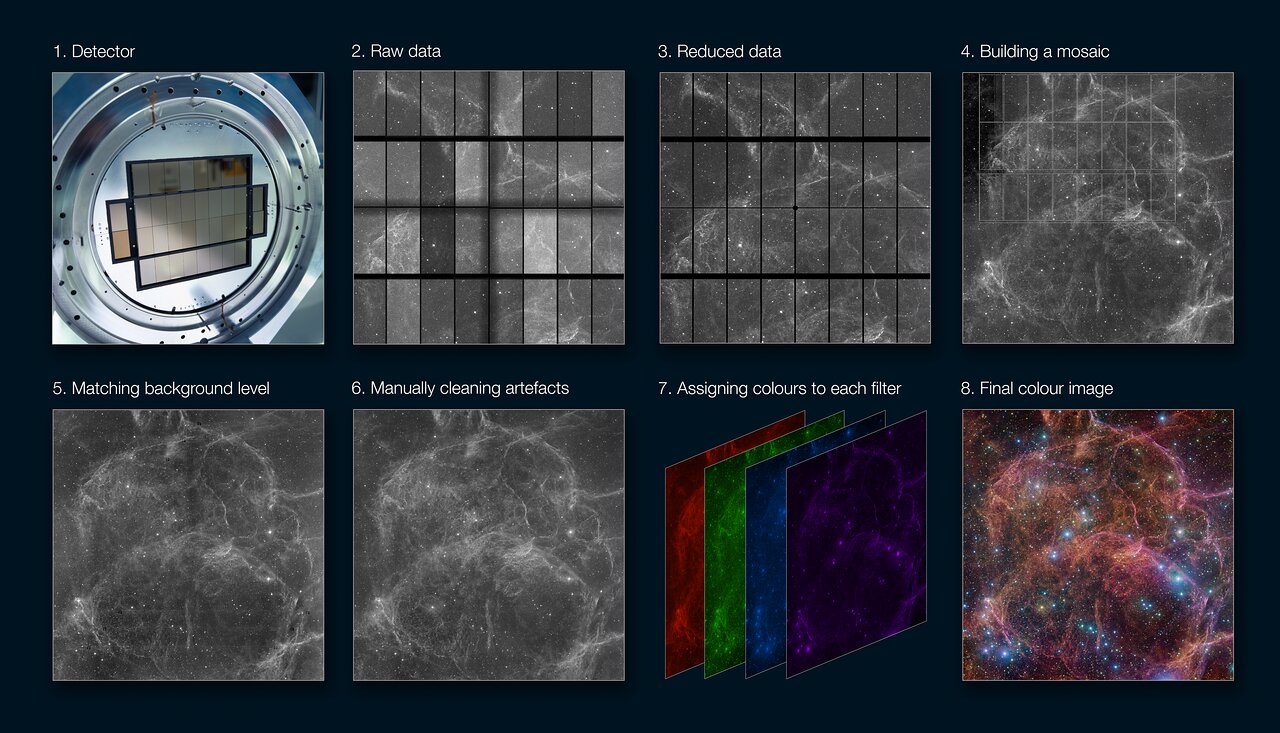Creating astronomical images is no easy task, and astronomers with the European Southern Observatory have provided a handy guide to show you how astronomy goes from raw data to an image that you can splash on your desktop.
The journey starts with the detector itself. In the case of the VLT Survey Telescope located at the European Southern Observatory’s Paranal Observatory in Chile, the detector captures the light that is collected by the telescope. The VLT’s detector is called OmegaCam, which is about as simple as you can get. It is an array of 32 detectors and is essentially a digital camera on steroids.
The raw image collected by that camera is full of defects. There are dead pixels, shadows, and even differences between the 32 detectors that appear as brightness variations. The first step for astronomers is to remove all of those artifacts and even everything out. Automated software tools usually help with this task.
This process of removing the artifacts and smoothing everything out is called data reduction. To reduce the images astronomers use calibration data, which are sets of images that were specifically designed to be free of any of these artifacts and variations. The astronomers can apply the same techniques that they used on the calibration data to clean up the new image.
If the target of the observations is larger than the field of view of the telescope, then the telescope has to scan across the target. Astronomers must then stitch together the final image into what’s called a mosaic.
Because the individual images of the mosaic are not taken at the same time, this process will introduce more brightness variations. Astronomers will take the different images on different nights which will have different observing conditions and different phases of the moon. To correct for this, when astronomers constructed the mosaic they intentionally overlap some of the images from separate observations. By comparing the overlapped regions, the astronomers can normalize the overall picture to have the same brightness level.
Up until this point the process is usually automated by computer software. But at this stage astronomers have to take over personally, and they manually clean out any additional artifacts or imperfect edges between different mosaic sections.
Digital cameras, including those used on giant telescopes, don’t capture color images in one shot. Instead they take multiple black and white images but with different color filters applied. So astronomers have to blend all of the separate images together to go from black and white to color.
Many times in astronomy the telescope captures light outside the visible spectrum, and so they must assigned colors to different wavelengths of observation in the final image.
After all that work, involving both automated systems and human adjustment, astronomers can finally release a final, beautiful image.

